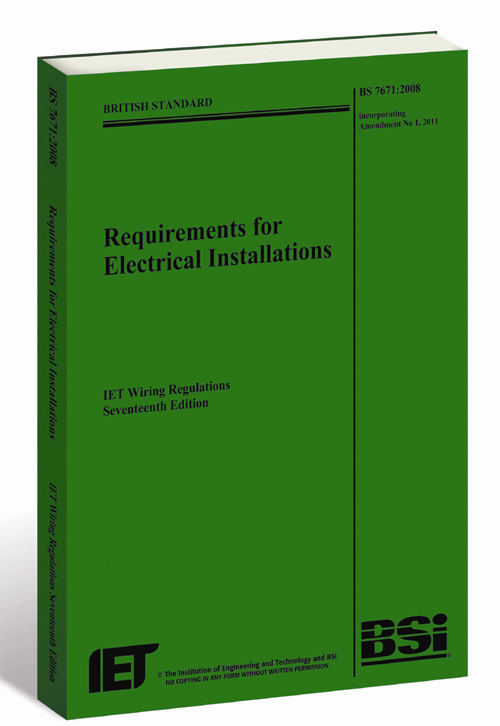 Geoff Cronshaw, chief electrical engineer at the Institution of Engineering & Technology (IET) claims that, as an industry, it is imperative that we comply with current Wiring Regulations to ensure that our work is safe and up to the required standard.
Geoff Cronshaw, chief electrical engineer at the Institution of Engineering & Technology (IET) claims that, as an industry, it is imperative that we comply with current Wiring Regulations to ensure that our work is safe and up to the required standard.
Recent research produced by IET suggests that up to 76% of UK electricians could be operating without a copy of the current IET Wiring Regulations, 17th Edition, BS 7671:2008 incorporating Amendment No.1, 2011. Taken as an actual number, this means that around 122,000 electricians in the UK could be operating to outdated wiring standards.
This could have major repercussions for our industry in that many new electrical installations could be unsafe and even in breach of current UK legislation. The IET Wiring Regulations, which came into effect on 1st January this year, although not statutory, outlines the current requirements for which all domestic and industrial wiring should now conform. With this in mind, it is essential that all UK electricians get up to speed with the IET Wiring Regulations in order to ensure our industry retains its high standards and duty of care to the general public.
Based on CENELEC HDs and IEC standards, the amended IET Wiring Regulations reflect those standards set out in Europe and the international community. The standardisation process is perpetual and standards are continually evolving, requiring national standards bodies to incorporate the technical changes. Therefore, the amended IET Wiring Regulations embody the most recent changes made at a European and International level.
One of the major changes in the amended Wiring Regulations is in Appendix 6 which introduces the new Electrical Installation Condition Report to replace the Periodic Inspection Report. This new reporting procedure has an easy to understand coding system and has been split into two areas – the first relating to domestic or similar installations up to 100A and the second for larger installations, greater than 100A.
In addition, the amended IET Wiring Regulations introduce a number of new sections relating to electromagnetic disturbances, devices for protection against overvoltage, medical locations and operating and maintenance gangways. With so many changes, all UK electricians need to be aware of these new additions and tailor their work accordingly as failure to do so may have negative outcomes in the long run.
Firstly, not installing to the requirements of the IET Wiring Regulations is likely to mean non-compliance with the law, namely the Electricity at Work Regulations 1989. Ignoring the latest standards in wiring can also result in contravening the requirements of the Building Regulations of England and Wales, of Scotland and of Northern Ireland.
 Secondly, electrical installers need to be familiar with the current wiring standards in order to meet the prerequisites of their scheme provider. For example, contractors seeking enrolment as an NICEIC Domestic Installer are required to demonstrate that their work is in line with standards set by the IET Wiring Regulations.
Secondly, electrical installers need to be familiar with the current wiring standards in order to meet the prerequisites of their scheme provider. For example, contractors seeking enrolment as an NICEIC Domestic Installer are required to demonstrate that their work is in line with standards set by the IET Wiring Regulations.
As the authority on the requirements for electrical installations, the IET wants to ensure that the electrical industry continues to operate to high standards of safety. However, this can only be achieved with the help of the industry itself. By making themselves aware of the current wiring standards via the IET Wiring Regulations, we hope that everyone will be up to date and able to go about their work in an effective and safe manner.
To purchase your copy of the amended IET Wiring Regulations visit www.theiet.org/amend1. To find out more about the new requirements for electrical installations, you can also speak to an expert at the IET on 01438 765599 or e-mail technical@theiet.org.

